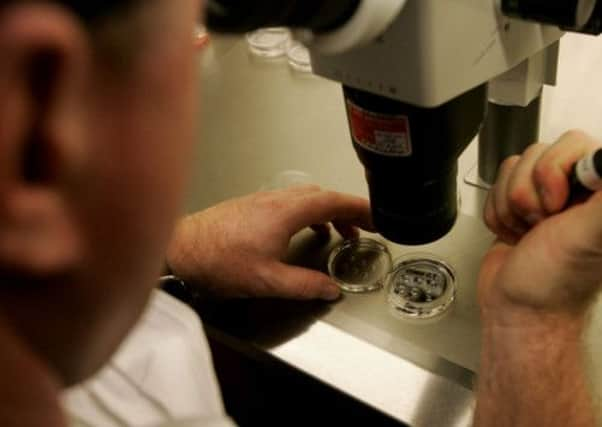Edinburgh University scientists’ stem cell find


The researchers at Edinburgh University focused on the process which causes these stem cells – the building blocks of the body with the ability to turn into different types of cell and tissue – to renew themselves and increase in number.
Having a large number of cells to work with is vital for research into how they could be harnessed to create new therapies for illnesses such as Parkinson’s, motor neurone disease and liver and heart disease.
Advertisement
Hide AdAdvertisement
Hide AdThe researchers, led by Professor Ian Chambers, said they now had a better understanding of how the properties of embryonic stem cells are controlled after finding a particular protein could be harnessed to boost their growth.
The study, published in the journal Cell Stem Cell, found that the Oct 4 protein, which switches on genes to allow embryonic stem cells to self-renew, works better when the level of the protein is reduced.
It was previously believed that once levels of this protein were reduced, the numbers of new stem cells being produced would also fall. But the researchers found the opposite was true.
Prof Chambers said: “What we found was a complete surprise, as we thought that when levels of this key protein were reduced, the numbers of pluripotent stem cells [those cells able to turn into other cell types] being generated would also fall.
“Instead, it appears that when the levels of Oct 4 are lower, the balance is tipped in favour of self-renewal.”
The researchers were able to reduce the levels of the protein by genetically modifying the cells so that they produced less Oct 4.
During embryonic development, pluripotent cells that have the capacity to become any cell type in the body can either renew themselves by multiplying in number or differentiate to become cells found in different parts of the body, for example skin or liver cells.
It is important for researchers to be able to increase the number of these cells so they have enough of them and they can be turned into other types of cell.
Advertisement
Hide AdAdvertisement
Hide AdThe scientists at the Medical Research Council Centre for Regenerative Medicine at Edinburgh University found that when there were lower levels of Oct 4, the protein bound much more tightly to key parts of DNA – the genetic material – in cells.
The research could help improve the way in which stem cells are cultured in the laboratory, providing a better understanding of how cells divide and multiply or generate into different cell types.